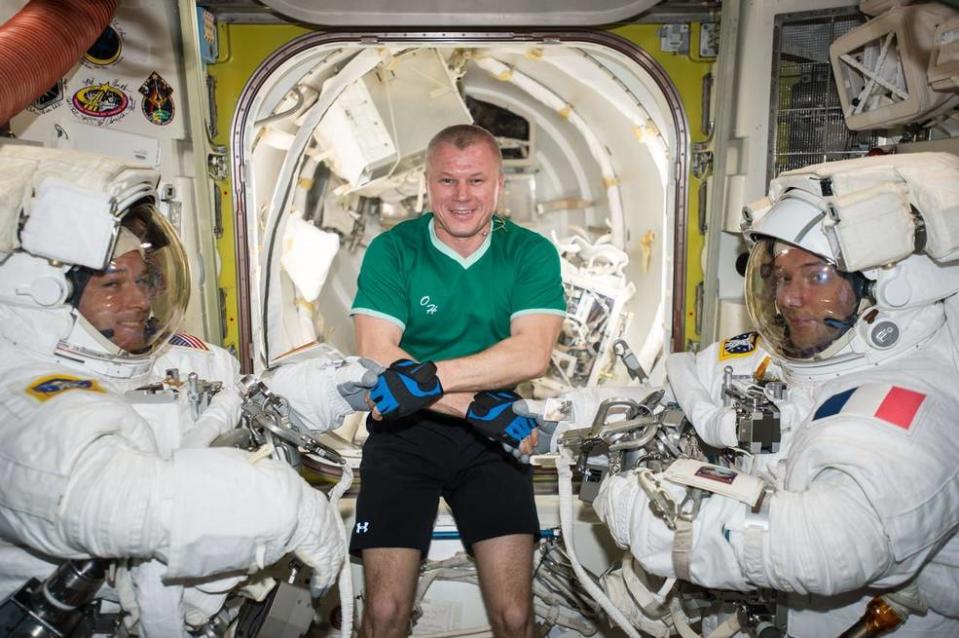Astronauts aboard ISS complete 6-hour spacewalk to install new solar panels

Nasa’s Shane Kimbrough and European Space Agency’s Thomas Pesquet conducted a six-hour-long spacewalk outside the International Space Station (ISS) on Sunday to complete the deployment of its new solar arrays.
During the spacewalk, which lasted six hours and thirty-eight minutes, the duo successfully unfolded the new ISS Roll-Out Solar Array (iROSA) and bolted it into place, and connected cables to the station’s power supply.
According to Nasa, the new arrays – delivered to ISS on 5 June aboard the 22nd SpaceX Dragon Cargo resupply mission – are being put in place since the existing panels, which have been in operation for over 20 years, are showing signs of wear after long-term exposure to the space environment.
The new solar panel installations are made with the aim to ensure that a sufficient power supply is maintained for its technology demonstrations for Nasa’s Artemis mission, during which the space agency plans to land the first woman and first person of colour on the Moon.
In this fourth joined spacewalk for Kimbrough and Pesquet, the duo also removed and stowed hardware in preparation for releasing the second iROSA from the flight support structure for installation – an upgrade planned for another spacewalk, tentatively on 25 June.
“It is a huge team effort each time and couldn’t be happier to return with @astro_kimbrough,” Pesquet tweeted, referring to Kimbrough.
With its installation, the new arrays combined with the old ones, are expected to increase the space station’s total power capacity from 160 kilowatts to 215 kilowatts.
The new upgrades, which will upgrade six of the eight power channels on the space station, would also aid in future space missions as well as improve the utilisation and commercialisation of ISS, Nasa said in a blog post on its website.
Here we go again for episode ✌️ of the new solar array installation spacewalks. Today we finish installing the first and roll straight into preparing the second! It is a huge team effort each time and couldn't be happier to return with @astro_kimbrough https://t.co/cXBB3MSugD pic.twitter.com/OWNrJQeguy
— Thomas Pesquet (@Thom_astro) June 20, 2021
ISS crew members have so far conducted 240 spacewalks in support of assembly and maintenance of the orbiting laboratory, and have spent a total of 63 days and 56 minutes working outside the station, Nasa said.
Since its inception, the space station, which has completed its 20-year milestone of human presence in November, 2020, has housed 244 people from 19 countries.
The 60-foot-long roll out solar arrays have successfully deployed as the space station soared over the United States. #AskNASA | https://t.co/yuOTrYN8CV pic.twitter.com/6mQOQ2Fj5n
— International Space Station (@Space_Station) June 20, 2021
The orbiting laboratory has hosted nearly 3,000 research investigations from researchers in 108 countries and areas, Nasa noted.
According to the space agency, the installation of the new panels – expected to have a 15-year lifespan – is slated to be completed on Friday, and will power both daily operations as well as research and science projects carried out on the ISS.
Read More
Watch live as Joe Biden signs Juneteenth National Independence Day Act
China completes historic launch of first astronauts to stay on its new space station
